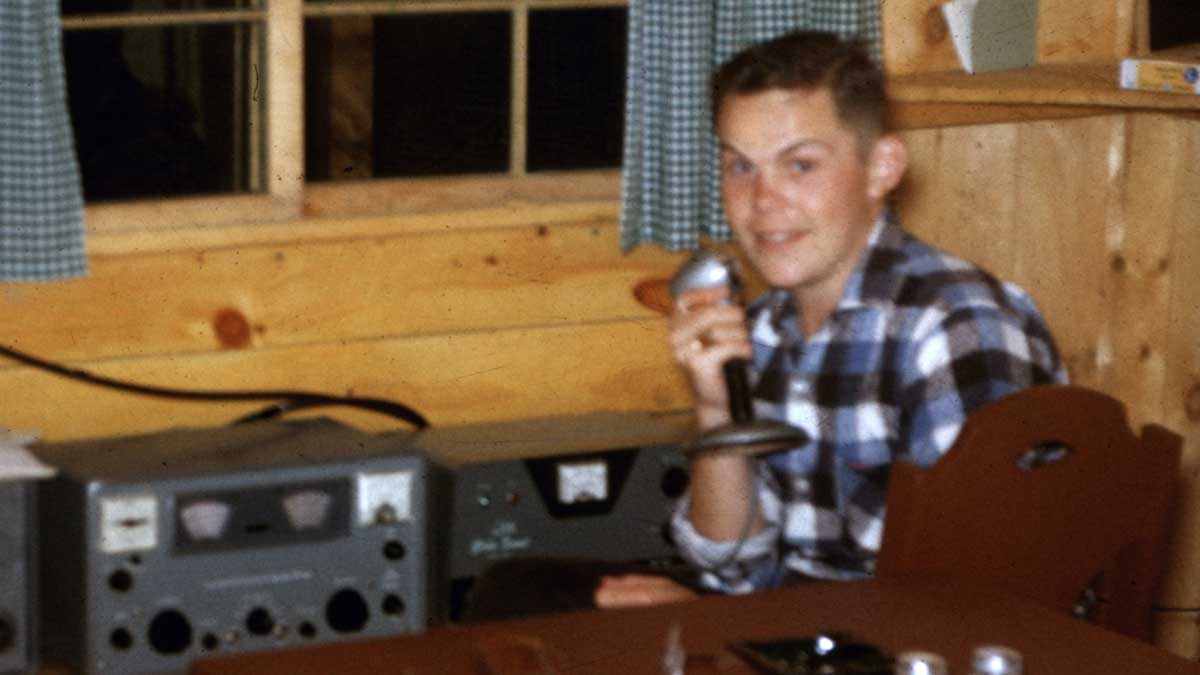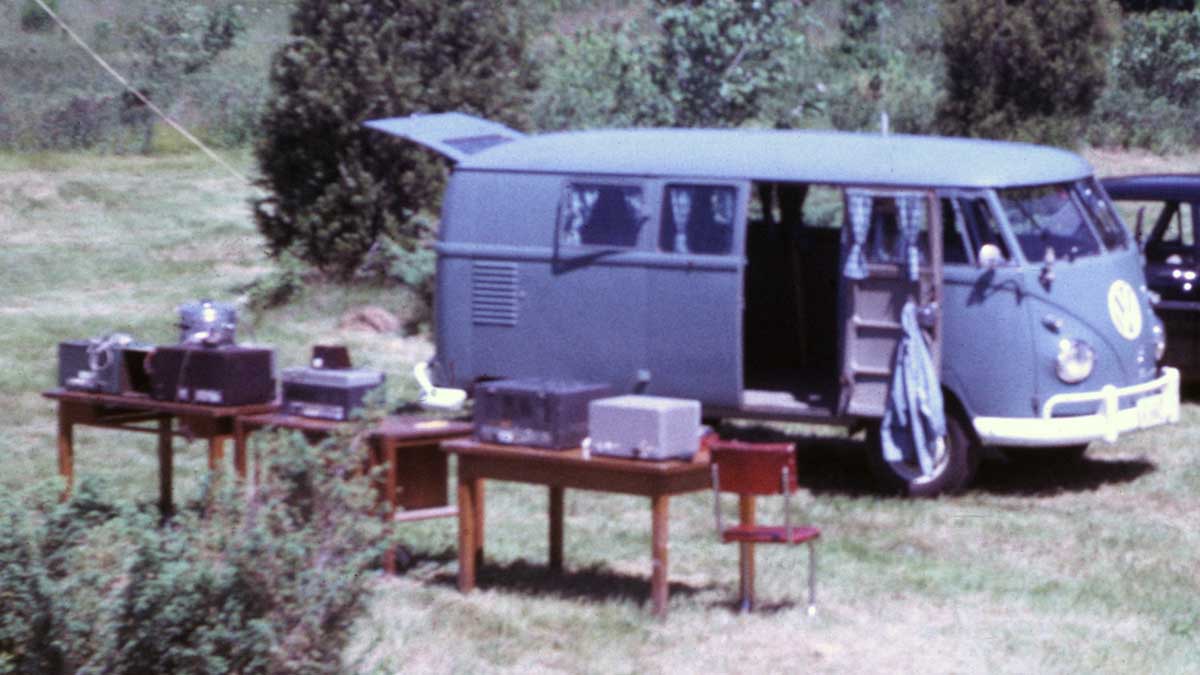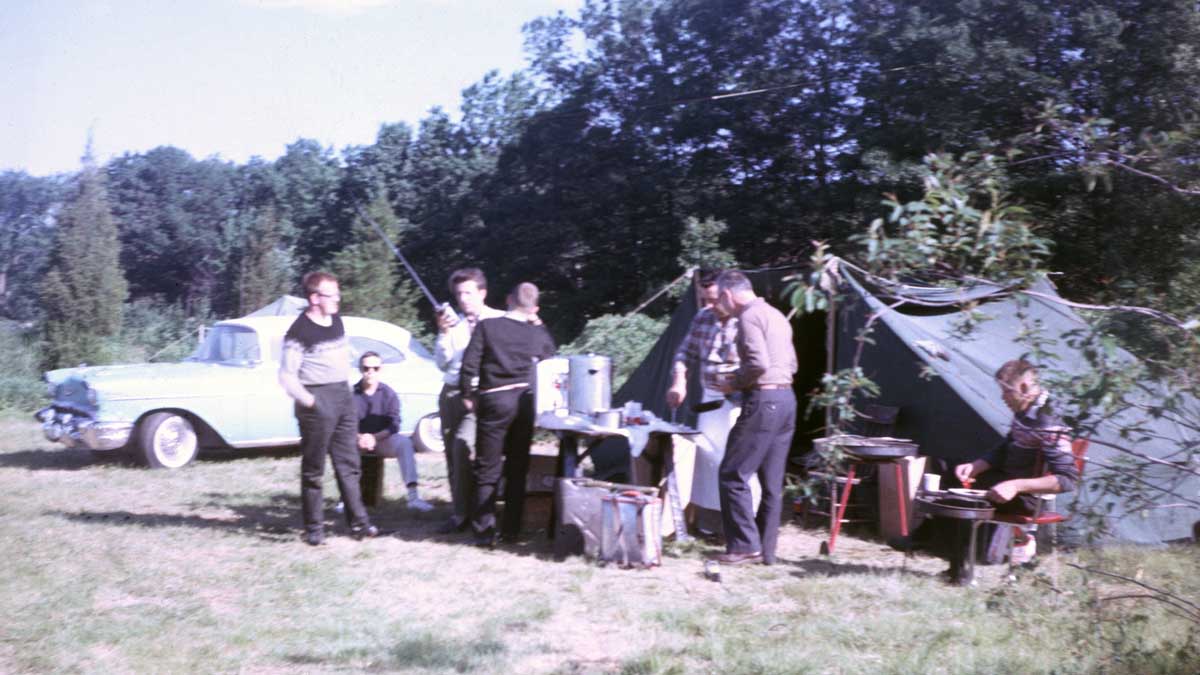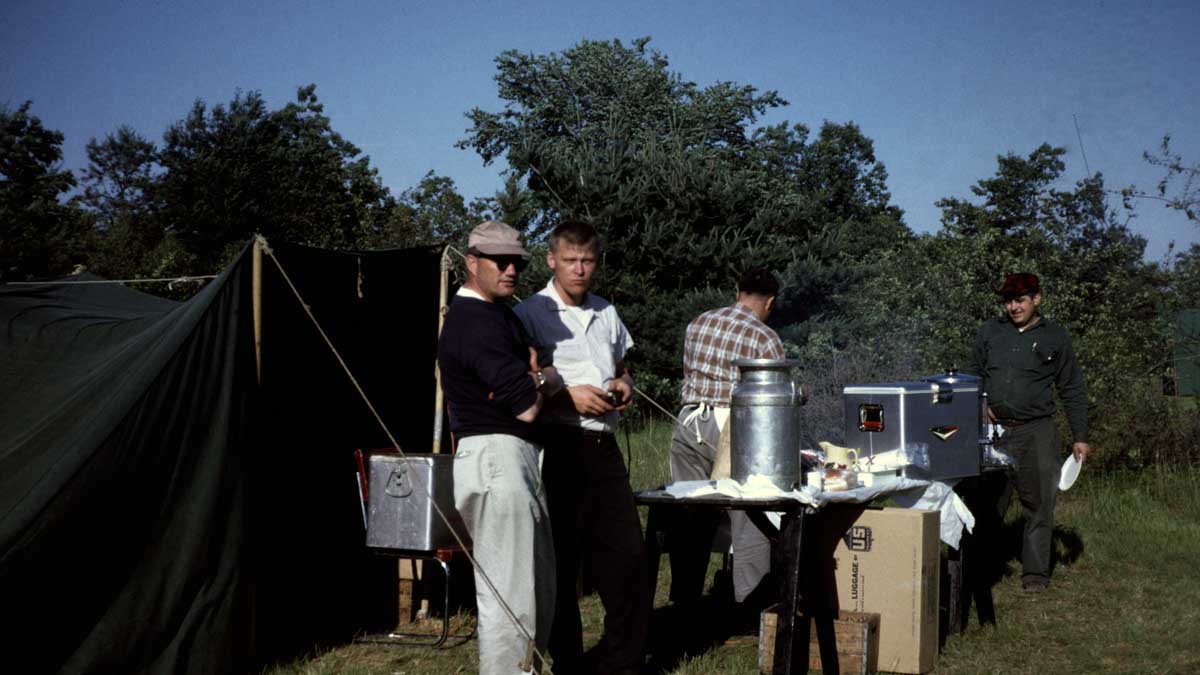Blackstone Valley Amateur Radio Club History
Early Days
The BVARC was founded in 1953 by a very small group of local hams whose goal was to stimulate interest in, and share their knowledge of Amateur Radio. This group met with a member of the Narragansett Association for Radio Amateurs (W1AQ) to discuss how to set up a charter. The W1AQ group is now called Amateur Radio Association of Southern New England.
The discussions with them led to a charter, constitution, and by-laws that were adopted, and filed with the State of Rhode Island. Thus the Blackstone Valley Amateur Radio Club, Inc. was created. The original signatories of the charter were:- Ray St. Onge W1IHW
- Lionel Parenteau W1ZEZ
- Dave Pascal W1ZFV
- Norm Thibault W1AUT
- Warren Greene W1DOR
- Bob Beaudet W1YRC
During this early period, the club met weekly on Friday evenings and conducted classes in ham radio and most of the W1D series of calls were issued to graduates of the classes. Ray St. Onge, W1IHW, was appointed trustee of the BVARC, and obtained the club callsign, W1DDD, without any special request to the FCC. It was strictly a sequential issue. The club raised money in the early days by running very successful ham and bean suppers.
Lionel Parenteau, W1ZEZ, and Fathers Grenier and Boudreau secured a permanent meeting place at the Holy Family Church's parish house in Woonsocket, RI. The club occupied the entire second floor of the church's Stone House providing a radio room, library, sitting room, and a full kitchen. Club station W1DDD consisted of a home brew 500 watt clamp tube modulated eighty meter rig, home brew plate modulated kilowatt amplifier on twenty meter AM and CW, Hallicrafters SX-71 receiver, a home brew twenty meter rig with a pair of 250 TH tubes in the final and a pair of 810s in the Class B modulator, a Johnson Viking Ranger to drive the kilowatt, National HRO-60 receiver and a home brew ten meter transmitter. W1DDD worked the world with this station!
Many older members recall these years in the Stone House as BVARC’s golden years. The quarters weren’t fancy but more than adequate for a wide variety of classes, guest speaker and demo programs, exam sessions and of course, a world class DX station. Golly, we had fun in those years.
The antenna system at the Stone House included a bat wing “WonderBar” ten meter dipole made from a TV antenna (November 1956 QST design), a full size wide spaced twenty meter home brew Yagi, constructed out of one to four inch diameter irrigation tubing for its elements and boom, using ordinary auto muffler clamps (hardware from Sears Roebuck and built by W1YRC). It was mounted atop a fifty ft tall utility pole and gave W1DDD a great signal on 20 meter CW and AM. Its most frequent operator was Dave Pascal, W1ZFV. He sometimes operated the station through the night on Fridays. He was a machine and could operate literally for hours without any break at all. He certainly made W1DDD famous on 20 meters. W1DDD also had a "Happy Accident" ten meter ground plane (January 1957 QST design) and a Windom off-center fed all band dipole as many of its members had during that late 50s, 60s period. Isn’t it funny? Now, fifty years later, the off center fed antenna is once again a popular antenna?
Field Day has always been an important activity of the club. Our first several Field Days were held at Bob Beaudet's father's 13 acre farm on Diamond Hill Road, just a mile into Cumberland. Other sites included the Diamond Hill Rod and Gun Club which we’ll always remember as “the quarry” where RF couldn’t escape and later, the top of Logee St, across from Mount St. Charles, the Branchaud residence on Farnum Pike (Route 5), an undeveloped hill-top field in Slatersville, Buck Hill in Burrillville and for the last several years, at the No Scituate Senior Center (formerly known as The Chopmist Hill Inn) on Rt 102, just south of Rt 6 in No Scituate. Without any reservation, some of many members’ fondest memories of his or her time in the club were from this annual summer time event of Field Day. It’s an event combining emergency preparation, technical “on-the-fly” know-how and family social fun all wrapped into the last full weekend every June. See elsewhere in this website for many pictures from Field Days past.
- 1954 Lionel Parenteau W1ZEZ
- 1955 Ray St Onge W1IHW
- 1956 Ray St Onge W1IHW
- 1957 Phil Bernard W1WMW
- 1958 Lionel Parenteau W1ZEZ
- 1959 Norm Thibault W1AUT
- 1960 Ray St Onge W1IHW
- 1961 Roland Bibeau K1LZW
- 1962 Joe Beaudoin K1ORM
- 1963 Norm Thibault W1AUT
- 1964 Gordon Fox W1YNE
- 1965 Bob Beaudet W1YRC
In the late 60s, club activity slowly declined and we couldn’t even gather a quorum to call a legitimate meeting to order. This happens to clubs, when they follow the economy and conflicting social interests. President Bob Beaudet, W1YRC, held Board of Governors meetings once a year and kept the charter active, waiting for the day when new members could be attracted and new interest developed.
All clubs move through cycles and follow the economy and other influences. BVARC had only been incorporated for a decade and its days might have been over. There wasn’t enthusiasm among the membership to even attract a quorum. That’s very sad but normal. In the future, we must provide programs and try to avoid apathy and disinterest.







